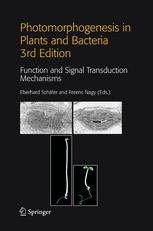

Most ebook files are in PDF format, so you can easily read them using various software such as Foxit Reader or directly on the Google Chrome browser.
Some ebook files are released by publishers in other formats such as .awz, .mobi, .epub, .fb2, etc. You may need to install specific software to read these formats on mobile/PC, such as Calibre.
Please read the tutorial at this link: https://ebookbell.com/faq
We offer FREE conversion to the popular formats you request; however, this may take some time. Therefore, right after payment, please email us, and we will try to provide the service as quickly as possible.
For some exceptional file formats or broken links (if any), please refrain from opening any disputes. Instead, email us first, and we will try to assist within a maximum of 6 hours.
EbookBell Team

0.0
0 reviewsPlants as sessile organisms have evolved fascinating capacities to adapt to changes in their natural environment. Arguably, light is by far the most important and variable environmental factor. The quality, quantity, direction and duration of light is monitored by a series of photoreceptors covering spectral information from UVB to near infrared. The response of the plants to light is called photomorphogenesis and it is regulated by the concerted action of photoreceptors. The combined techniques of action spectroscopy and biochemistry allowed one of the important photoreceptors – phytochrome – to be identified in the middle of the last century. An enormous number of physiological studies published in the last century describe the properties of phytochrome and its function and also the physiology of blue and UV-B photoreceptors, unidentified at the time. This knowledge was summarized in the advanced textbook “Photomorphogenesis in Plants” (Kendrick and Kronenberg, eds., 1986, 1994). With the advent of molecular biology, genetics and new molecular, cellular techniques, our knowledge in the field of photomorphogenesis has dramatically increased over the last 15 years.